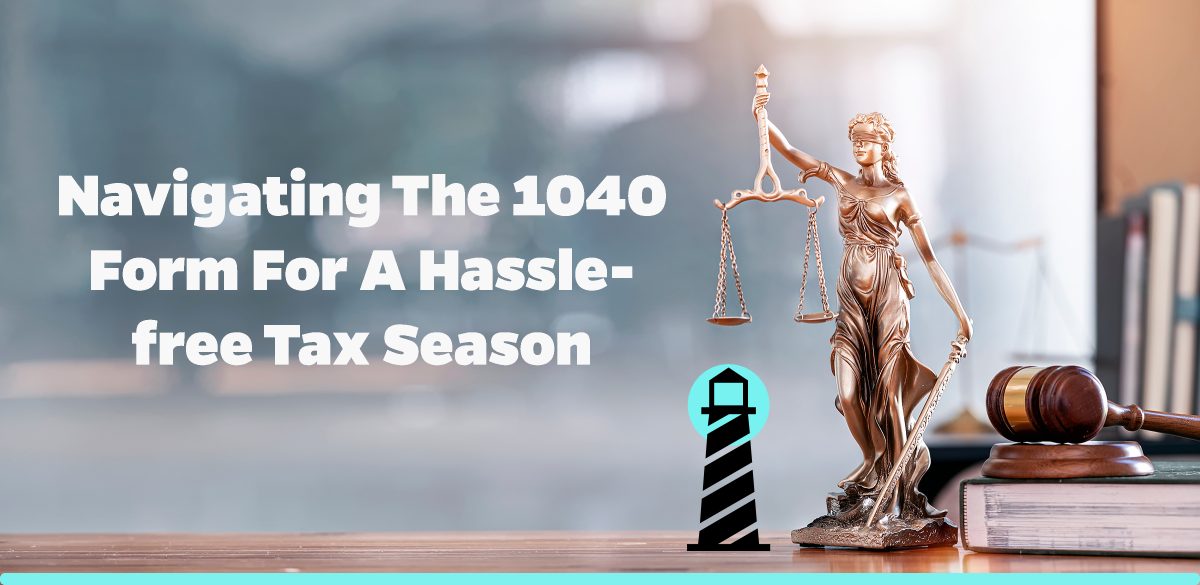Navigating the Complexities of the 1040 Form
The tax filing process can often appear daunting due to the extensive paperwork involved. Among the various documents you need to grapple with, the 1040 form is probably the most crucial. As the standard income tax return form for individual U.S. taxpayers, understanding and efficiently navigating the IRS 1040 form is a must.
At Brightside Tax Relief, we answer a ton of questions each tax season related to the 1040 form. We have cultivated this educational resource to dispel confusion and guide you through the process.
Grasping the Significance of the 1040 Form
The key to overcoming the overwhelming feeling associated with filling out tax paperwork lies in understanding why a particular document is required. In essence, the 1040 form gives you a chance to share your income sources, claim deductions and credits, and calculate your tax refund or liability.
Here are some key things to remember:
– The 1040 form is essentially your report card for the IRS.
– This form provides the IRS with a detailed account of your income and deductions.
– It allows the IRS to gauge the accuracy of your tax payment for the year.
Utilizing the 1040 form correctly can help you swiftly navigate through tax season, reducing headaches and potential mistakes that could lead to future problems.
Identifying the Various 1040 Forms
One of the first steps before even filling out a 1040 tax form is to determine which variation you will need. There are three different types of 1040 forms, and they each serve a unique purpose:
– 1040: This is the U.S. individual income tax return mostly used by taxpayers.
– 1040-SR: This form is designed for individuals aged 65 and over.
– 1040-NR: This version is for non-resident aliens who conduct business in the U.S.
You must choose the right form that corresponds to your specific tax circumstances. If you’re uncertain, a tax professional from Brightside Tax Relief can assist you in making the right choice.
Understanding the Sections of the 1040 Form
The IRS 1040 form is divided into multiple sections, each specifically requesting particular information. Let’s delve into the breakdown:
– Filing Status & Exemptions: Here, you will need to indicate your filing status and exemptions.
– Income: In this section, you’re required to disclose all sources of your income.
– Adjusted Gross Income (AGI): This area deals with adjustments to your gross income, reducing the amount of income subject to tax.
– Tax and Credits: This is where you apply credits to reduce tax liability.
– Other Taxes: Documents other taxes you may owe.
– Payments: This includes payments you have already made.
– Refund and Amount You Owe: You will either identify a refund due to you or an amount you owe.
Understanding these various sections will streamline your process and enable you to fill out your 1040 form with ease and confidence.
Consider Professional Assistance
Tax season can bring about considerable stress, especially when you have to navigate complex forms like the 1040. While it’s possible to fill out and submit your 1040 alone, getting professional assistance can help you optimize the process, leverage tax benefits, and mitigate the risk of errors.
Brightside Tax Relief offers a comprehensive range of services to assist with your tax filing needs. Our team of experienced tax professionals is always ready to guide you through complex tax situations and ensure that everything is handled to the highest standards, providing you with a hassle-free and efficient tax filing experience.
In conclusion, the key to a pain-free tax season lies in understanding the ins and outs of the 1040 form. By taking the time to educate yourself or seeking professional assistance, you can navigate the 1040 form with ease, ensuring a smooth and successful tax filing.
If you’d like to learn more about the 1040 form, visit the IRS’ website here.






